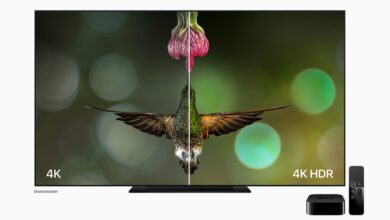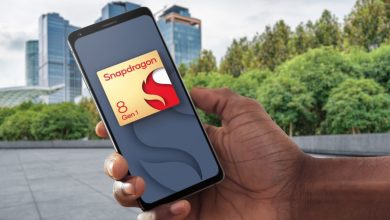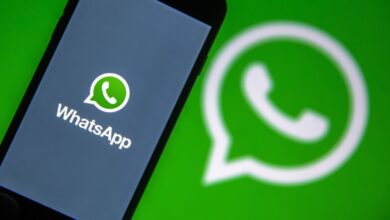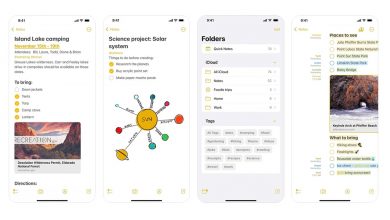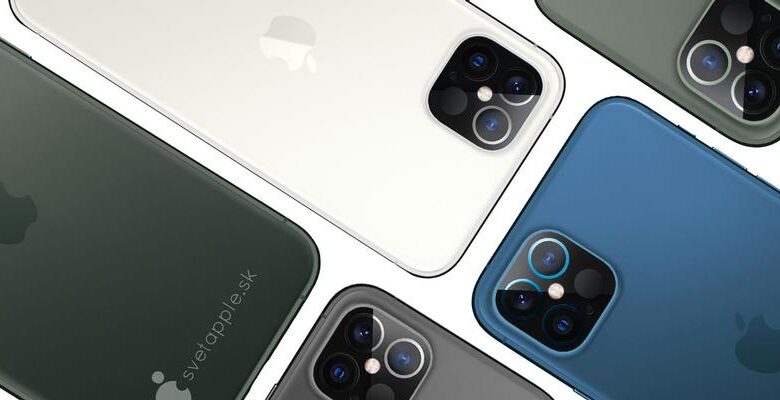
The iPhone 12 was originally expected to launch in September 2020, but in a startling admission Apple has now confirmed it will be delayed. The question is, how late will it be? And will it be split into two separate launches? In this article we comb through the latest rumours about its release date, design, new features, tech specs and price, and cut through the gossip.
With a couple of months to go we have a pretty good idea of what to expect. The design – squared-off corners, larger screen, reconfigured camera array – has been leaked, and the full specs list revealed. We have the prices of every model, which seem likely to go up again this year, and have heard whispers of a new tougher form of Gorilla Glass that could be used for the screen.
Controversially, it looks like Apple won’t bundle any headphones or a charger with the iPhone 12, which is sure to make a few people quite annoyed. But cheer up, because there will be a nice braided Lightning cable in the box.
Contents
When will the new iPhone come out?
The next batch of iPhones will be announced in autumn 2020 (that’s been the case every year since 2011), but it may not be in Apple’s traditional September slot.
The company rarely comments publicly on its product release plans, but after its earnings report at the end of July CFO Luca Maestri confirmed that the iPhone 12 will come out a few weeks later than usual. That’s still pretty vague, and we don’t know if it applies to the announcement itself or just the on-sale date, but things must be serious for secrecy-obsessed Apple to have reached this point.
In absence of further official detail, the latest theory is that Apple is going to split the iPhone 12 launch in two. It will release the two 6.1in models initially, supply-chain sources claim (that’s the 12 Max and 12 Pro), followed by the 5.4in iPhone 12 and the 6.7in 12 Pro Max a few weeks later. Because the first two would be based on the same OLED screens, it would ease some of the pressure on Apple’s manufacturing partners.
Reports have been suggesting for a while that production of the iPhone 12 faces delays of at least a month, which would push us into October or beyond. There’s some dispute about whether this will merely affect the shipping date (which as Samuel Nyberg points out is not unprecedented – we’ve been here before, with the iPhone X in 2017) or if it will actually, and unprecedentedly, push back the date of the announcement. Broadcom for one has hinted that the launch will be pushed back from the third to the fourth quarter of the year.
(Twitter sources, whose reliability frankly is open to dispute, have said the iPhone 12 launch event will take place on 8 September, and it’s possible that Apple could still hit that date while shipping the product some time later. But it feels optimistic right now.)
But that’s not the worst of it. Sources familiar with the company report that Apple has been considering a delay of several months, which could easily push the iPhone 12’s release back into 2021, as a result of COVID-19.
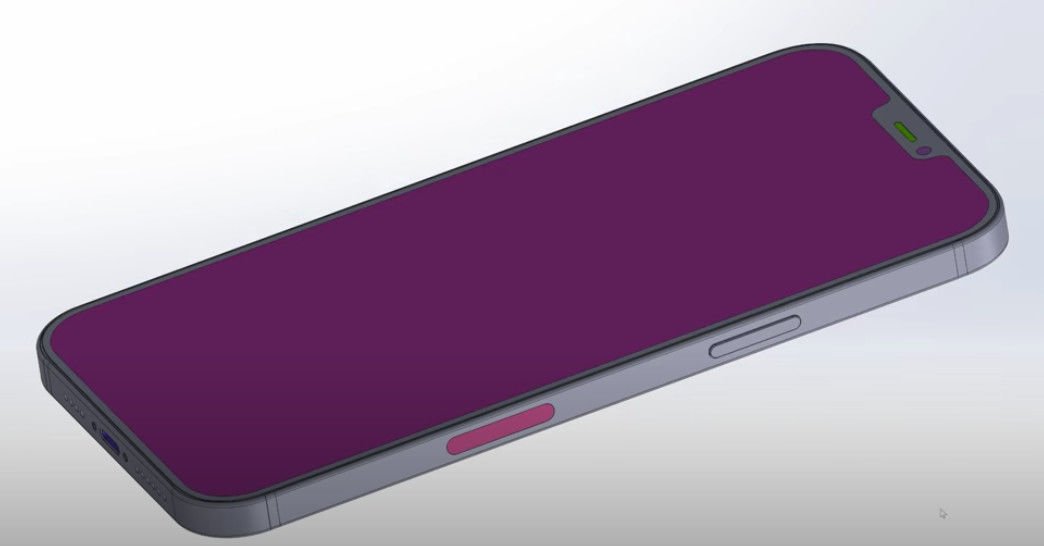
Design changes
We’re starting to get a good idea of what the iPhone 12 will look like, as numerous leaks and rumours coalesce towards a single point of consensus. (One thing that’s generally agreed upon, for example, is that the foldable iPhone prototype won’t become a commercial product this year – that’s one for 2021 or beyond.)
Most recently, the leaker Max Weinbach claims to have obtained CAD schematics for the iPhone 12 Max (see image above), from which the YouTube channel EverythingApplePro 3D-printed a sample and showed it off in the following video:
Weinbach stresses that the schematics are not complete – he says “basically display and body are correct but the camera setup is wrong as a security measure” – and cynics might view this as an attempt to cover himself in case it’s wrong. But it fits with much of what we’d been hearing previously.
Watch the video for the full details, but the highlights include:
- Bezels that are 0.9mm thinner than on the 11 Pro Max
- Larger screen: 6.7in, compared to 6.5in
- Thinner chassis: 7.4mm, compared to 8.1mm
- Much smaller notch
- LiDAR sensor forms fourth element in square camera array
Notch
It’s been expected for a while that we could see the shrinking or total elimination of the notch.
The notch contains important sensors – those for Face ID, for example – and removing it would raise design problems, of course. Apple may go for a punch-hole design, which is a compromise of its own. But we feel that would be the worst of both worlds: an admission that the notch was a misstep, the loss of an iconic piece of design, and a failure, still, to actually provide a seamless all-screen design.
Based on the leaks above, it looks like the notch will remain, but take up less space. Which will please many but won’t satisfy all.
We suspect that the market as a whole will find it even more disappointing, however, if a more recent rumour is correct: that the notch won’t be any smaller. (This is based on leaked CAD images, which imply that Apple may have been seeding misinformation.)
Cameras
PhoneArena has posted concept illustrations showing an iPhone with four camera lenses on the rear. This is madness, surely… Although it does fit the square housing rather neatly. (The flash is placed in the centre.)
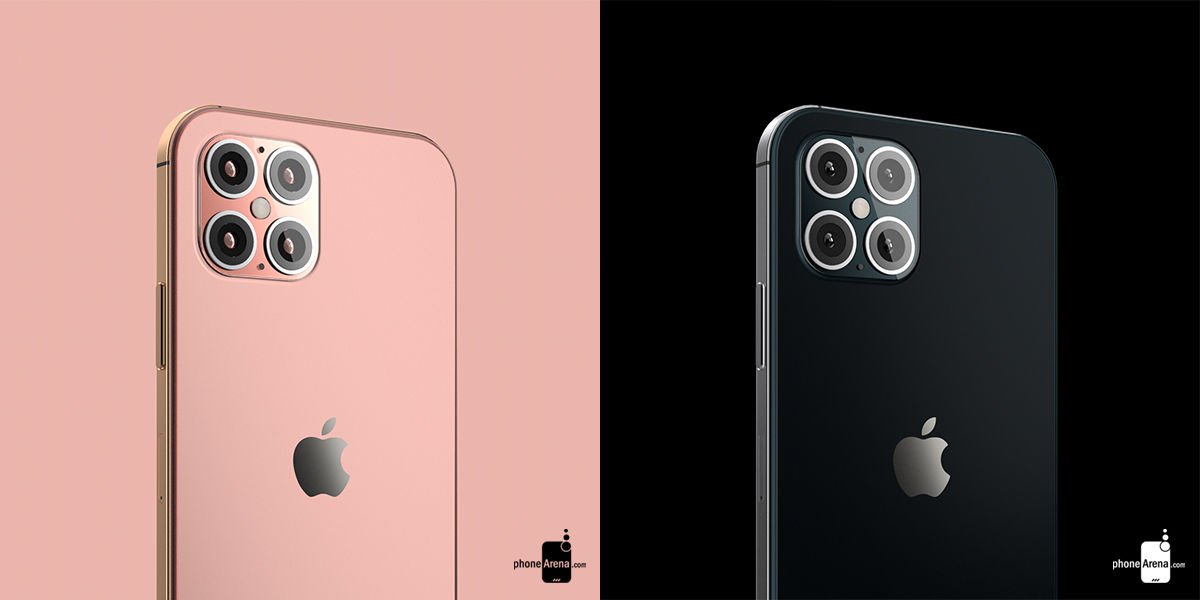
It now appears more likely that the fourth sensor will be LiDAR, like on the new iPad Pro, than a fourth camera lens.
There is also talk of a big-zoom periscope lens, but that’s not expected to appear until 2022.
Screen size
The 2020 iPhones will come in three screen sizes: 5.4in and 6.1in for the basic models, and 6.1in and 6.7in for the Pros. That comes from May’s spec dump, but these numbers have been circulating for a while.
If you’re wondering what a 5.4in notched iPhone would look like, you’re in luck: a MacRumors forum user bought a dummy of the expected design and took photos comparing it to the first-gen iPhone SE and iPhone 7.
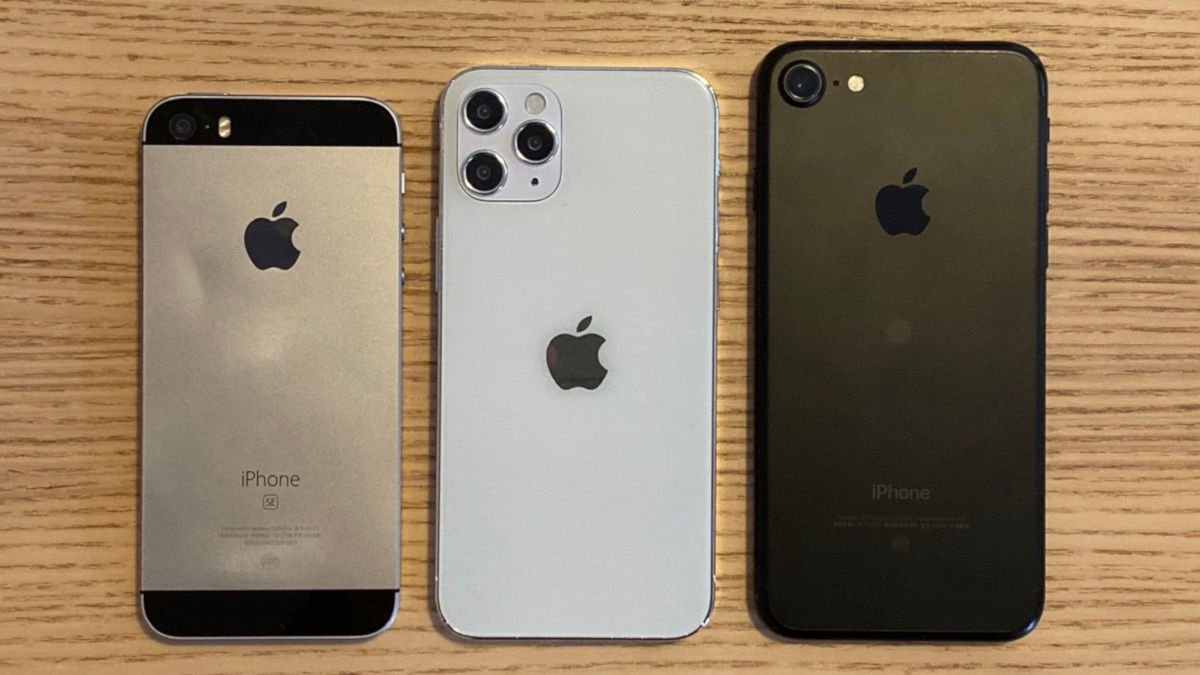
It looks ideal for one-handed use, doesn’t it? We got the same impression last year when Max Rudberg, a Swedish graphic designer, created a concept illustration of how the new 5.4in size might look.
These rough, but gives you an idea of what Apple could be going for with a 5.4″ device – something in between an iPhone 8 and an SE, but with a much larger screen.
I would guess they would scale down the UI of the XS, even if screen would be narrower than that of an 8. pic.twitter.com/EFR88i1hEb
— Max Rudberg (@maxrudberg)
June 24, 2019
The Macotakara report linked above also supports the existence of the new sizes. The site predicted some while ago that iPhones in 5.4in, 6.1in and 6.7in sizes would be launched in late 2020.
The death of Lightning
It’s a recurrent rumour, but will 2020 be the year Apple finally gives in and replaces its proprietary Lightning port with USB-C, as it did on its iPad Pro models in 2018?
In strategic terms we’re inclined to think probably not, since that was a special case – fast data transfers to and from cameras being a requirement of many digital creatives. And owners of Lightning-based headphones and other accessories would be pretty ticked off.
But Apple’s hand may be forced. The EU has been flexing its muscles for some time, and in January proposed (and subsequently voted to expedite) a measure to force all mobile manufacturers to standardise around USB-C. As the Register observes, however, Apple has ignored such measures in the past and may do so again in the future.
If we think in the longer term, Apple has given some thought to the idea of ditching the idea of physical charging ports altogether: a patent uncovered in February shows an iPhone with no Lightning port, no USB-C, and no buttons. But don’t expect anything as radical as this to arrive in 2020: rather, the portless iPhone will be here in 2021. (That theory is backed up by a second source.)

Colour options
The iPhone 11 Pro and Pro Max come in silver, gold, Space Grey and Midnight Green colour finishes; the iPhone 11 is available in white, black, green, yellow, purple and red. That’s a lot of choice, but what do we expect from the late-2020 generation?
The plain iPhone 12 will follow the 11 in the main, but Apple will tweak the offering depending on which colours were most popular. The XR from the year before came in white, black, blue, yellow, coral (reddish-pink) and red, but Apple dropped blue and coral in 2019 and replaced them with purple and green. If one of those hasn’t performed, it’ll get dropped in turn.
As for the iPhone 12 Pro handsets, we expect a new colour: navy blue. The leaker Max Weinbach has predicted (on the YouTube channel Everything Apple Pro) that this will replace Midnight Green – which we like, but provoked mixed reactions when it was announced. Here’s what a navy blue iPhone 12 Pro could look like, in a mockup created by the site:
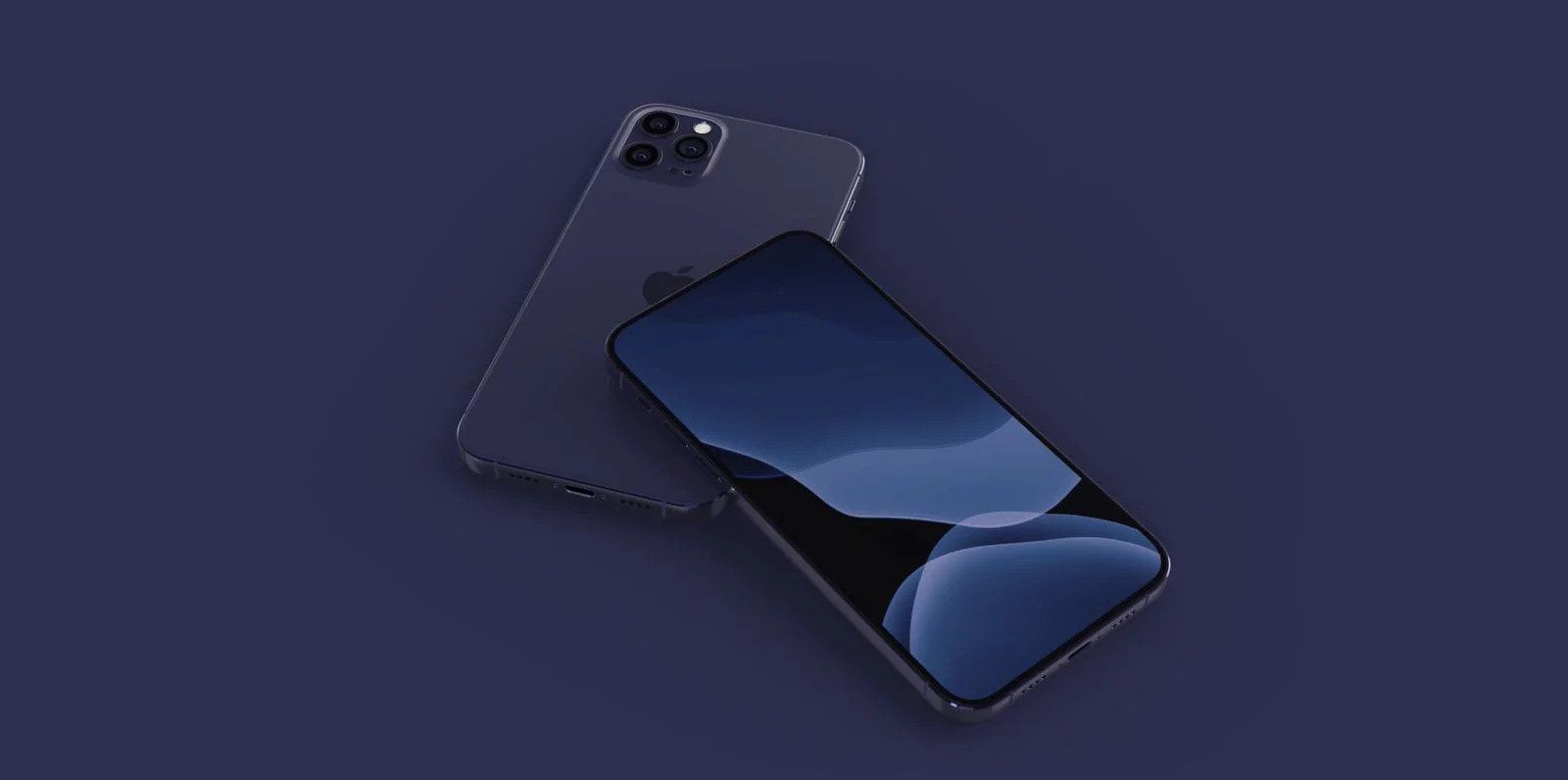
Leaked photos, illustrations & videos
We’ve already seen PhoneArena’s mock-up of what the iPhone 12 would look like with four rear-facing camera lenses, and EverythingApplePro’s mockup of a navy-blue finish, but that’s just the tip of the iceberg. In this section we will post the best iPhone 12 leaked photos, concept illustrations and videos as they appear.
First of all, take a look at this leaked photo of an alleged 5.4in iPhone 12, sourced from the Chinese social network Weibo. It appears to show that the notch will remain the same size on this petite version of the handset.
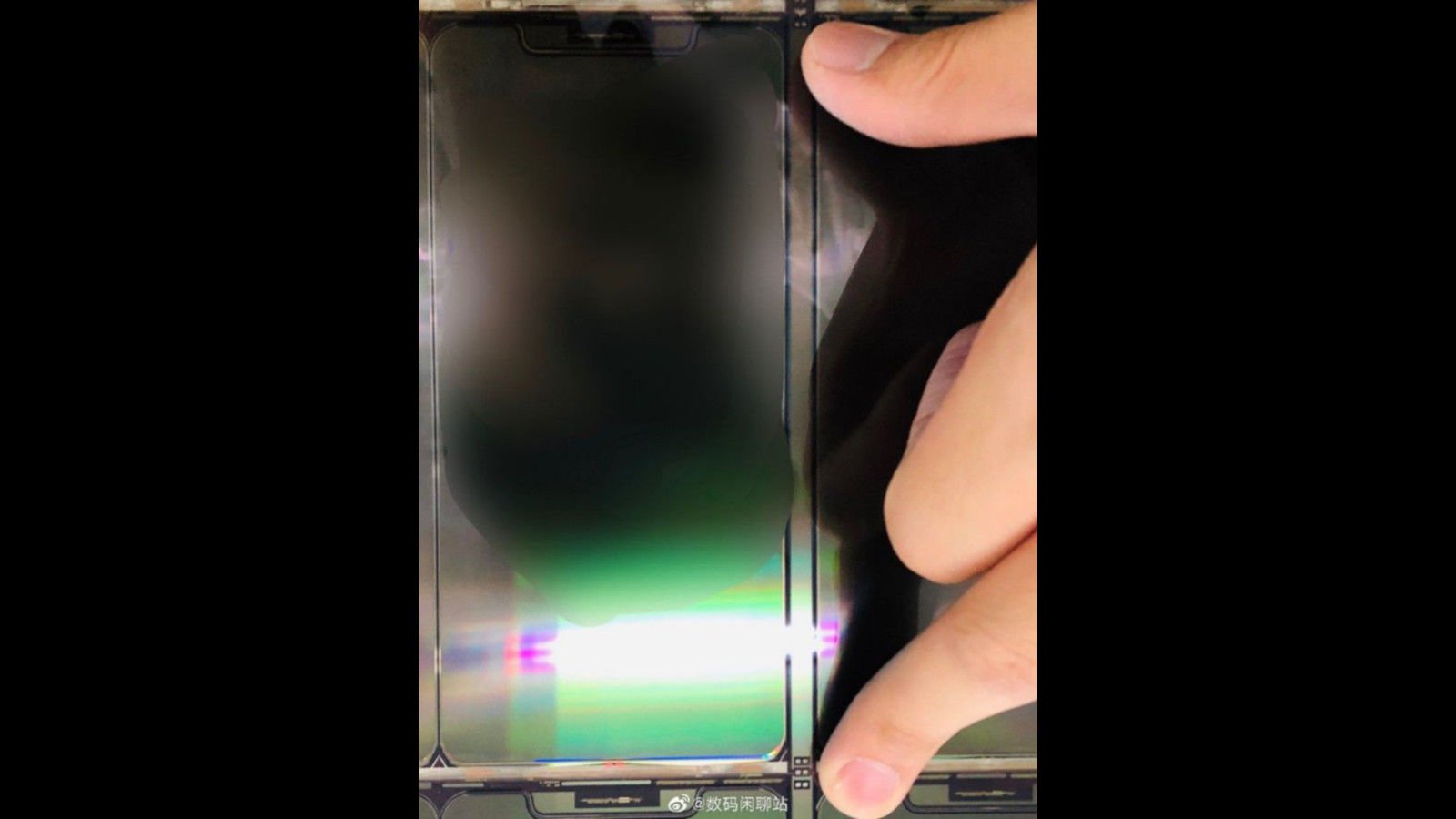
Next, we’ve got aluminium ‘moulds’ of the iPhone 12, which suggest the next generation of handsets will have straight sides and the same notch design as the iPhone 11.
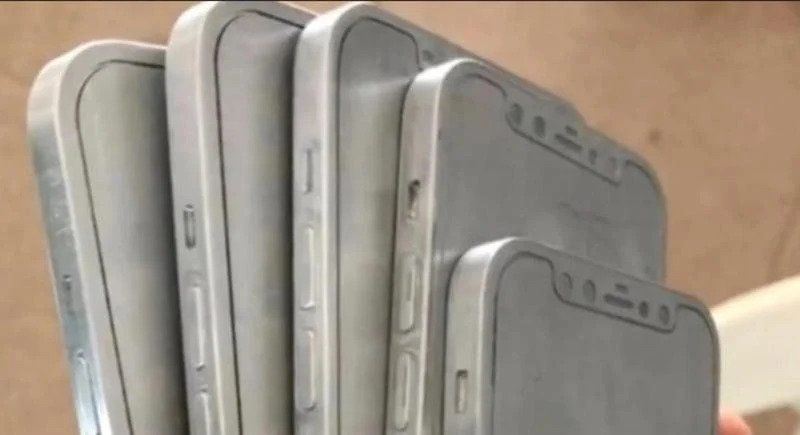
Note, however, that moulds of this kind are frequently created by accessory makers based on popular rumours rather than inside information from Apple, so they could just reflect our own theories back at us. Don’t bank on these being accurate. Read more in our separate article iPhone 12 moulds ‘leak’ indicating straight sides.
Next we’ve got photos of dummy units, posted to Twitter by well-known leaker Sonny Dickson.
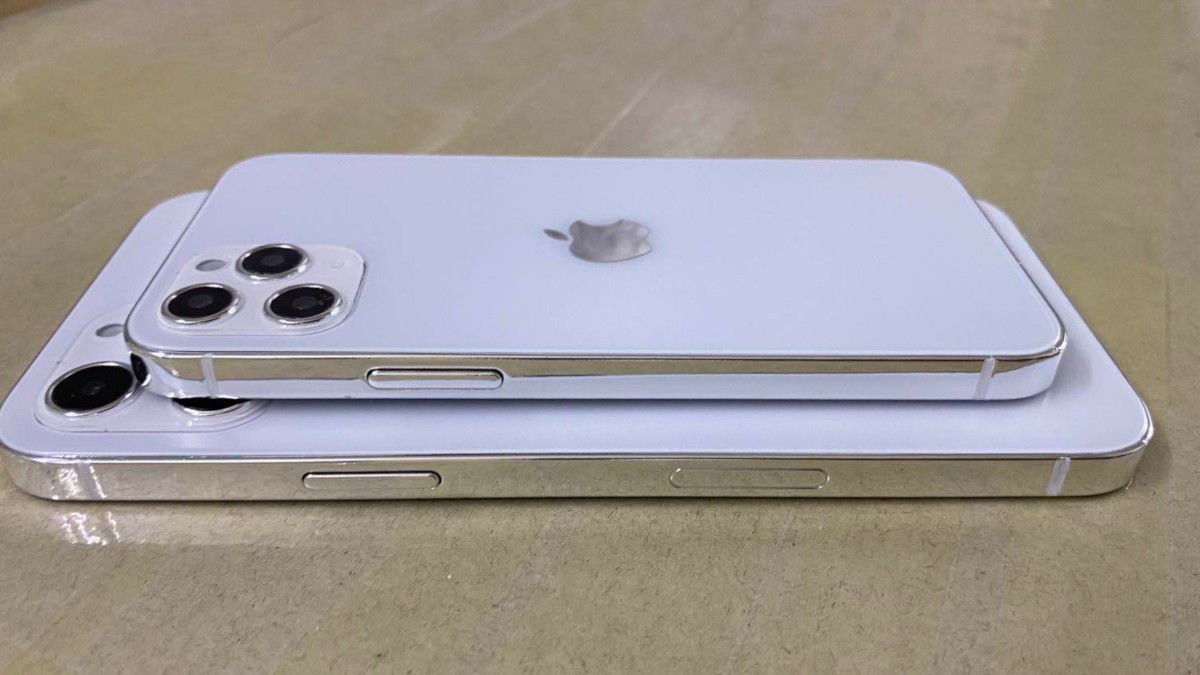
The models clearly show a new square-sided design, reminiscent of the iPad Pro and the old iPhone 5. As for the camera arrangement, don’t take that for granted; Dickson warns that “cameras should not be taken 100%”. Maybe we’ll get three lenses on the back, like here, but maybe Apple will squeeze in a fourth sensor. Read more here: iPhone 12 dummies reveal flat-sided design.
And that’s not it for dummy units. The following dummies of all four iPhone 12 models, showing clearly the three different screen sizes and relocated SIM trays to accommodate the 5G antenna, come from the Japanese blog Macotakara, which cites “Alibaba sources”.
Controversially, they have just twin- and triple-lens cameras on the rear, rather than the triple-lens-plus-LiDAR expected on the iPhone 12 Pro and Pro Max. Remember they’re just dummies, not the real thing.
Up next – allegedly – is a photo of the motherboard that will be used in the iPhone 12.
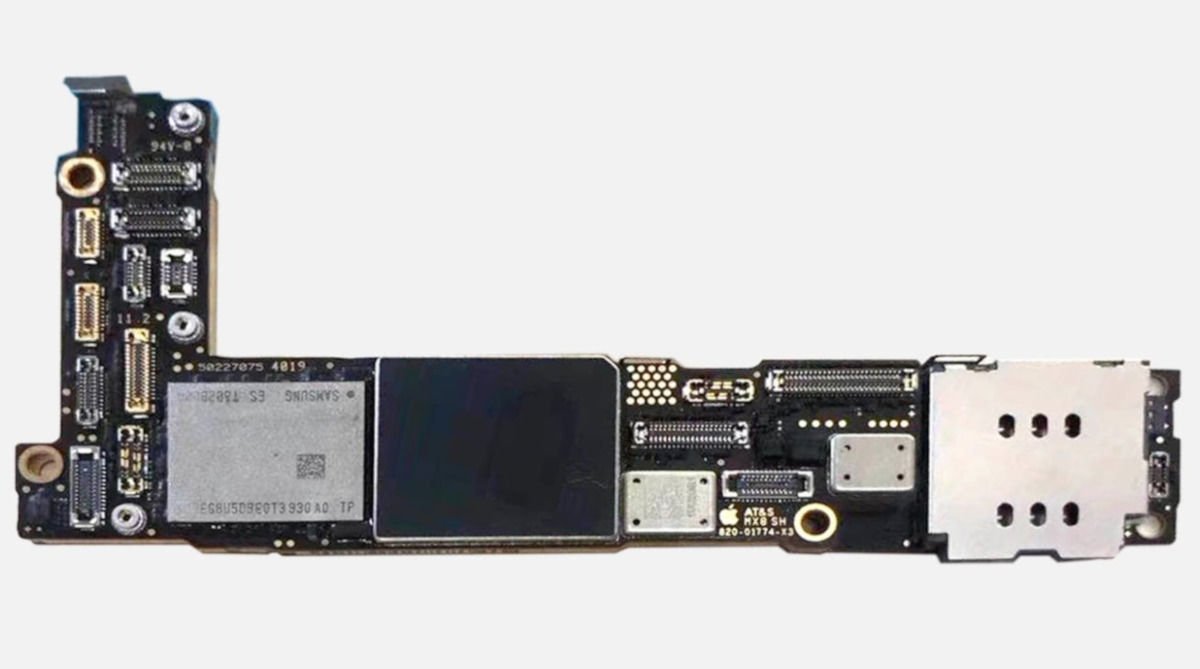
The image was posted to Twitter by everythingdesignleaks but originated on Chinese social media – indeed, it may have been taken back in 2019 but hasn’t attracted attention until now. It’s L-shaped, which may seem odd considering that the iPhone 11’s board is rectangular, but Apple has used L-shaped boards in the past, such as in the iPhone 8.
The Swedish site Svetapple has posted a large number of attractive concept illustrations of the iPhone 12 Pro. Remember these are not official leaks, but simply an artist’s impression.
The most noteworthy aspects of Svetapple’s renders are the new blue colour finish – although that has been rumoured before – and the inclusion of a LiDAR scanner, as on the 2020 iPad Pro.
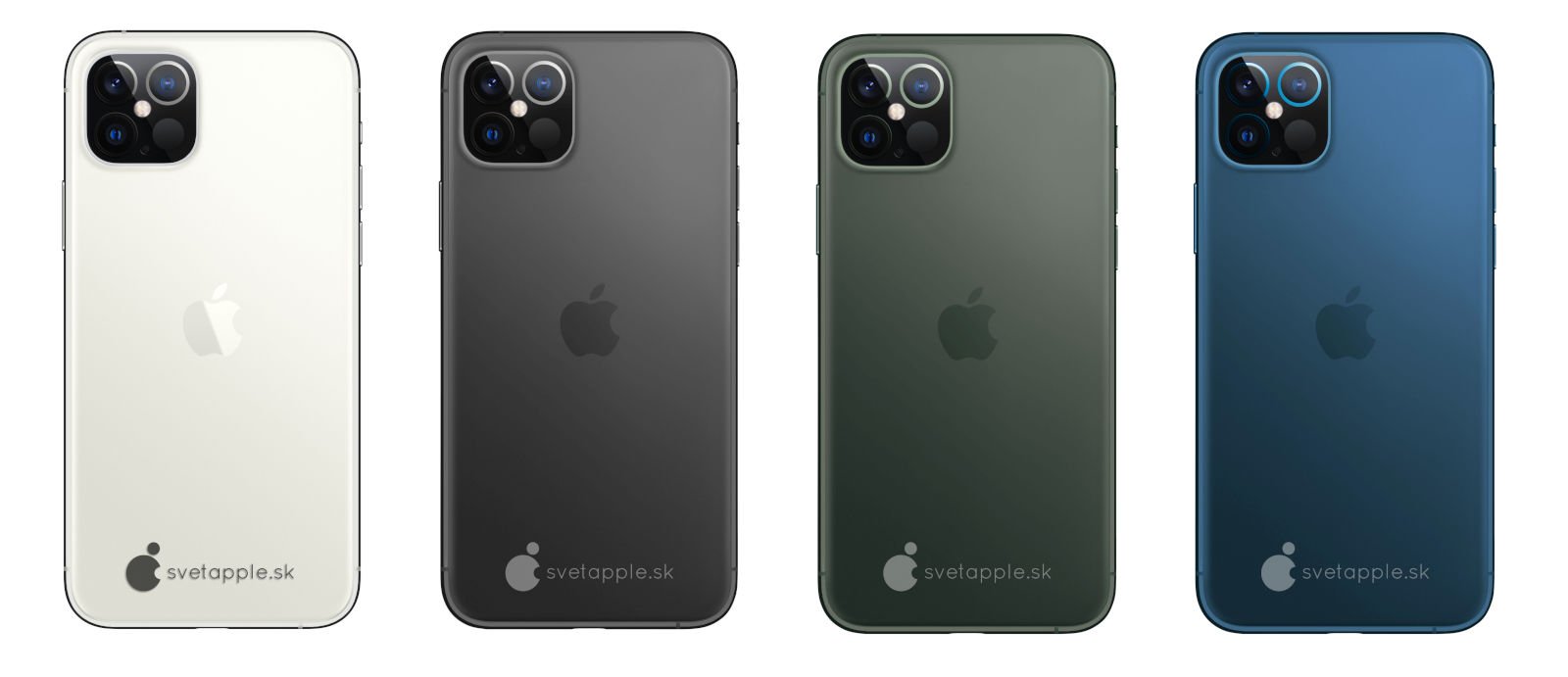
Here’s a more detailed look at the specs and features expected to appear:
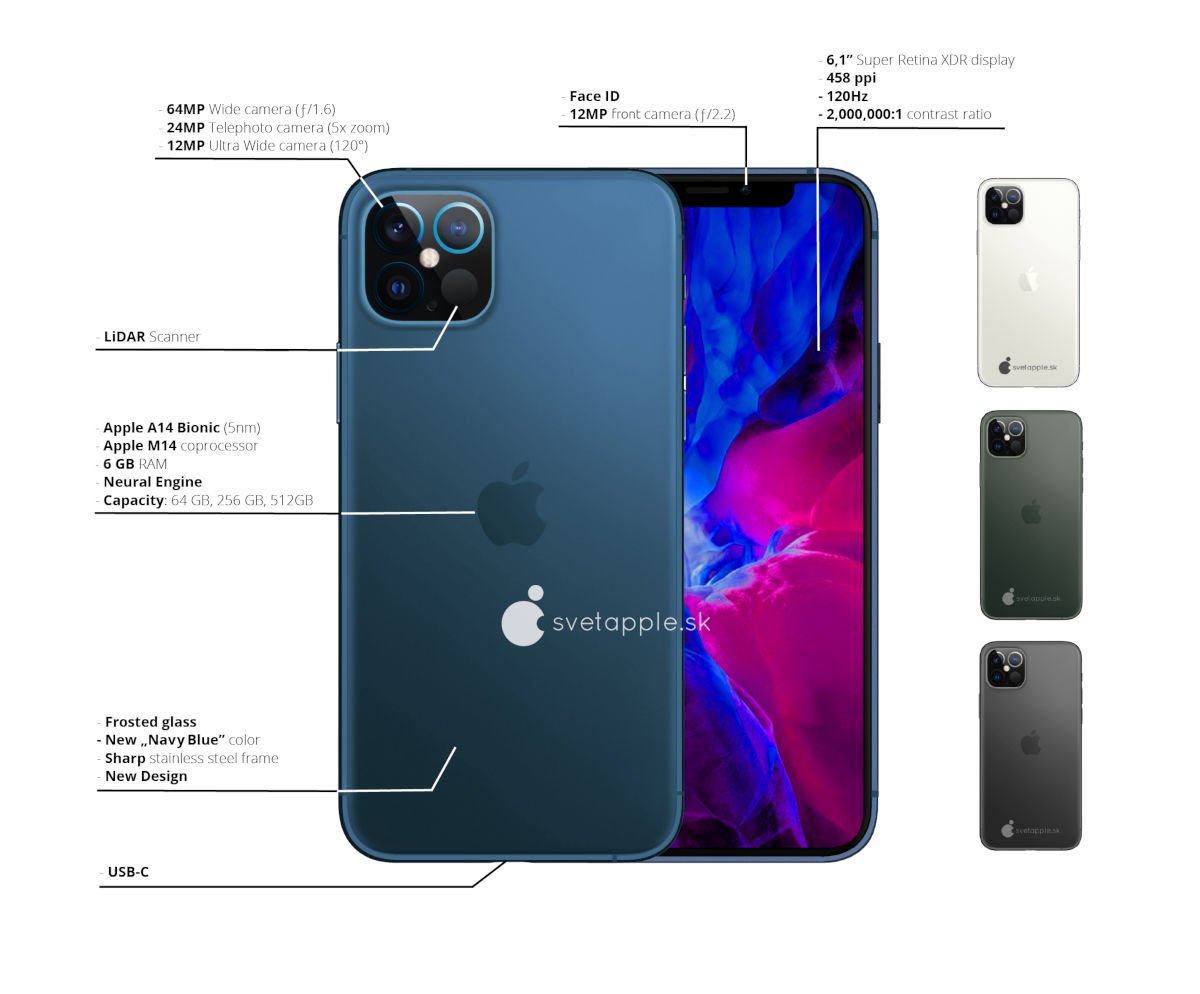
Next we’ve got photos and video of a leaked prototype from within Apple’s supply chain, posted by the Japanese blog Macotakara. The site claims it’s a 3D mockup obtained from “Alibaba sources”, although it cautions that the leak’s credibility is unknown.
You’ll note that the iPhone 12 depicted here has a far more squared-off edge than the iPhone 11 Pro Max (which it’s compared to in the righthand image). This design brings the 12 closer to the 2018 and 2020 iPad Pro models.
Most intriguingly, the site spotted a mysterious connector on one edge of the device:
It looks like the magnetic connector that recent iPad Pros use to attach and charge the second-gen Apple Pencil, but as Macotakara points out, that stylus is too large to fit on a smartphone. It speculates about the possibility of a new, petite version of the Apple Pencil being released to suit the iPhone 12.
For a closer look, here’s a video of the same mockup unit being examined.
Next is this concept video of the iPhone 12 Pro, from Concept Creator. It depicts the new handset with a slightly different arrangement of camera lenses on the rear.
The German design studio Hasan Kaymak has created a concept video of the iPhone 12 Pro Max with an astonishing cluster of rear-facing camera lenses and sensors. It also ditches the notch and Torx screws – since apparently the display is stuck on to the frame – and adds a 45W charger and fast wireless charging.
Up next is this stunning effort from Miloš Toman, which also goes for a quad-lens design but arranges them in a more elegant vertical formation:
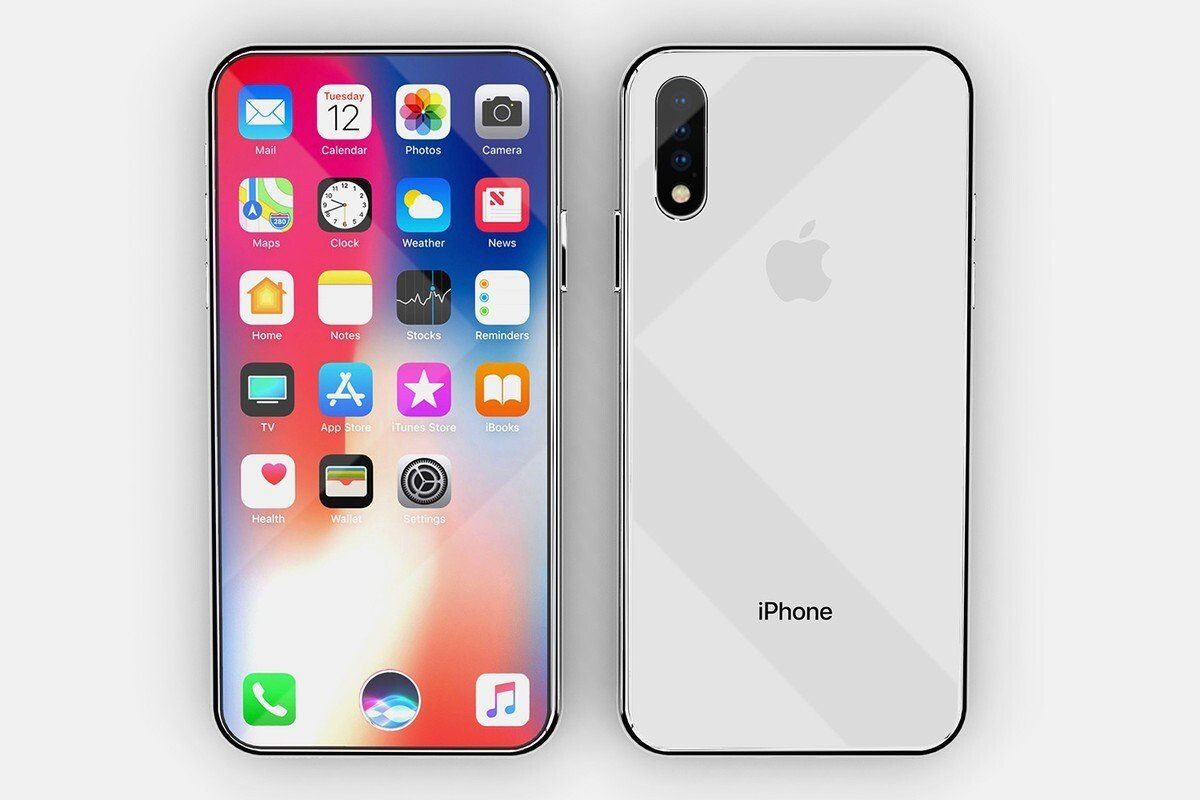
Toman came up with this back in March 2019, but there are now lots of Android phones on the market with vertically aligned rear cameras, including the OnePlus 7T Pro and (with five lenses!) the Xiaomi Mi Note 10. Indeed the twin lenses on the iPhone XS and 11 are arranged vertically, and we feel that it’s a slightly more attractive approach than the big square deployed on the 11 Pro and many concept images of the 12. The consensus is, however, that Apple will go for a square again this year.
Toman has also created a video showcasing this design:
New features
A new iPhone needs a flagship feature – something an announcement event can be built around. In 2019 it was all about the cameras (triple lenses and night mode). In 2020 we think it will be 5G, if Apple can pull it off in time.
5G
Android phone manufacturers have been widely offering 5G for some time – since before the iPhone 11 launched, in fact – but Apple is behind the curve in this department. Why the delay?
The problem is getting someone to supply the modems. Apple used to partner with Qualcomm but the two firms had a major falling-out over patents; later a relationship was set up with Intel, but that company has since quit the 5G arena… and sold most of its smartphone modem business to Apple.
So Apple could now make its own modems, but that won’t be feasible until 2021. In the meantime, it’s believed that deals with other suppliers (or with Qualcomm again, since legal matters have been resolved) are on track for a 5G launch in the second half of 2020. By which time, incidentally, Three will have finally started offering 5G and it will therefore be available to everyone in the UK… in theory, and depending on geography.
The other potential reason for Apple’s late entry to the 5G party could be that it wants to do the thing properly. There are multiple versions of the technology, and the one everyone really wants – referred to as millimetre wave, or mmWave – isn’t widely available yet. Most people are offering a mid-band version of 5G, operating at sub-6GHz frequencies, and this is slower than mmWave (although still a lot faster than 4G).
One analyst, Mehdi Hosseini of Susquehanna, has predicted that Apple will release the iPhone 12 with only mid-band 5G capabilities, then follow up with a mmWave-ready model a few months later – which sounds to us like a recipe for customer discontent. But Ming-Chi Kuo is reasonably confident that Apple will be ready for mmWave in time for the September 2020 launch. Indeed, he thinks that catering separately for mmWave and sub-6GHz 5G mean the company will actually announce four different handsets in September, the largest number of iPhones it has yet rolled out in a single launch.
Keeping on the technical side of things, Kuo has warned that Apple’s 5G-ready handsets probably won’t offer 2×2 MIMO uplink as had previously been predicted, and rather than six amplifier they will have only one or two. This may only affect theoretical upload speeds, however, at least at launch: the carrier infrastructure is unlikely to support 2×2 immediately.
We discuss this subject in far more detail in a separate article about 5G iPhone rumours.
3D camera
Before the late-2019 event, Bloomberg was predicting the imminent launch of an iPhone with a more powerful 3D camera, as part of Apple’s continuing push into AR. This now seems likelier than ever.
Current iPhones already feature 3D cameras, used for Face ID facial recognition, which makes it harder to market this as a breakthrough or flagship feature. But Bloomberg reckons that the 2020 version will be transformatively more powerful: it will have a range of around 15 feet, the site predicts, compared to just 25-50cm on the iPhone X series and 11. It will be used to scan the environment, whereas current 3D scanning is deployed on the user’s face.
Fast Company’s source predicts that the next iPhones will feature ToF (time-of-flight) 3D cameras on the rear – which is to say, the ‘world-facing’ end – and this would be a significant step forward. This will enable improved augmented reality, a tech category that is rapidly turning into an Apple obsession, as well as photo/video effects that aren’t currently possible, such as multi-layer bokeh.
The same supplier will be used for this sensor array as for the front-facing 3D setup, according to Fast Company, and the site cautions that Apple may yet veto the inclusion for 2020.
While we’re chatting cameras, Patently Apple has spotted patent activity that points to future iPhones having the ability to create fake group selfies even if the participants couldn’t be in the same place at the same time. Very useful at a time of lockdown, but it seems more likely that this feature will be implemented in software – ie an iOS update – rather than in new iPhone hardware.
Touch ID
This reintroduction of an old feature (one that’s still offered on the iPhone SE, of course) would be new in the way it’s applied – because to achieve it on the iPhone 12 Apple would need to embed the sensor somewhere other than in the Home button.
The sensor could be embedded under the glass of the screen: we’ve known for years that this is possible, but it’s not been logistically feasible to do so at scale. By late 2020 that should no longer be the case.
Indeed the Chinese-language site Economic Daily News believes Apple will be ready to deploy an under-display fingerprint sensor in its late-2020 handsets, based on Qualcomm’s ultrasonic scanning tech. Qualcomm already supplies this technology for use in Samsung phones, so the capabilities are there; but the site claims this will be a second-gen version that’s faster and has a longer range.
Patently Apple, meanwhile, has spotted a patent grant that would allow the company to place a fingerprint sensor under an OLED screen.
A less exciting but potentially more practical option would be to embed the fingerprint sensor in the power/side button, a method which is currently used on Samsung’s Galaxy S10e. Sure enough, in a late-January report Ming-Chi Kuo predicted that Apple will launch a lower-cost iPhone with power-button Touch ID in the first half of 2021. Some believe this design will be used for the iPhone SE Plus.
This is an interesting prediction, particularly because it raises the uncomfortable idea of a cheaper product boasting a new feature that hasn’t yet been made available to the flagship models… always a no-no. But it makes more sense if you assume that the top-end iPhone 12 will get under-screen Touch ID in autumn 2020, opening up space for the lower-end power button version the following year.
Ultra-short range 802.11ay Wi-Fi
Citing “sources familiar with the next iPhone 12”, Macotakara says there is a possibility that the device will support IEEE 802.11ay, a new and extremely short-range wireless standard. The site says this would enable the next iPhone to offer “significantly improved” data transfer performance between devices – in other words, AirDrop could get a major bump in the next generation.
This proposed update has been on the table for some time, having seen its earliest draft version in January 2017. The 802.11ay standard offers four times the bandwidth of 802.11ad and is based on the 60GHz band.
Specs
Thanks to hugely informative videos in May 2020 by EverythingApplePro and Front Page Tech, we now have a great idea of the iPhone 12’s specs sheet.
- A14 processor
- 5.4in/6.1in OLED Super Retina display (6.1in/6.7in OLED with 120Hz ProMotion on Pro models)
- 4GB RAM (6GB RAM on Pro)
- 128GB/256GB storage (plus 512GB on Pro)
- 5G
- Dual-lens rear camera (triple-lens with LiDAR on Pro)
A14 processor
Let’s talk a bit more about the A14 chip, which appears to be cropping up in some online benchmark tools. If these benchmarks are legitimate, the A14 is going to be crazy fast.
Take a look at the following screengrab from the popular benchmark Geekbench, posted by AppleInsider. It compares the score for an iPad Pro 12.9in from 2018 – one of the most powerful mobile devices Apple has ever released, albeit since overtaken by the 2020 Pro and its A12Z chip – with what appears to be a prototype iPhone 12. And the iPhone 12 is scoring higher, even in multi-core.
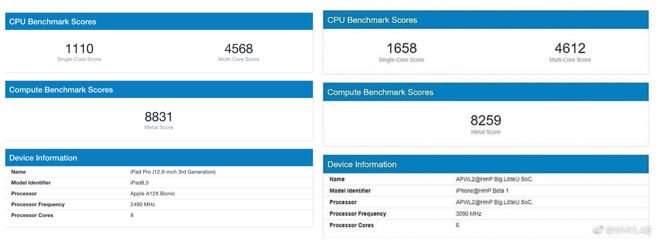
The ‘A14’ is clocked above 3GHz – the first of Apple’s A-family chips to achieve this – and despite having fewer cores than the A12X (6 rather than 8) it rates higher throughout the CPU tests.
How likely is this to be genuine? Reasonably likely. Prototype devices have been spotted in online test suites before previous Apple launches, which makes sense; by this point in the release schedule the company will undoubtedly have created and be testing in-house samples of the iPhone 12.
We’ve also seen alleged photos of the A14 popping up online; this isn’t hugely informative, although markings on the chip appear to indicate it was in production as early as April.
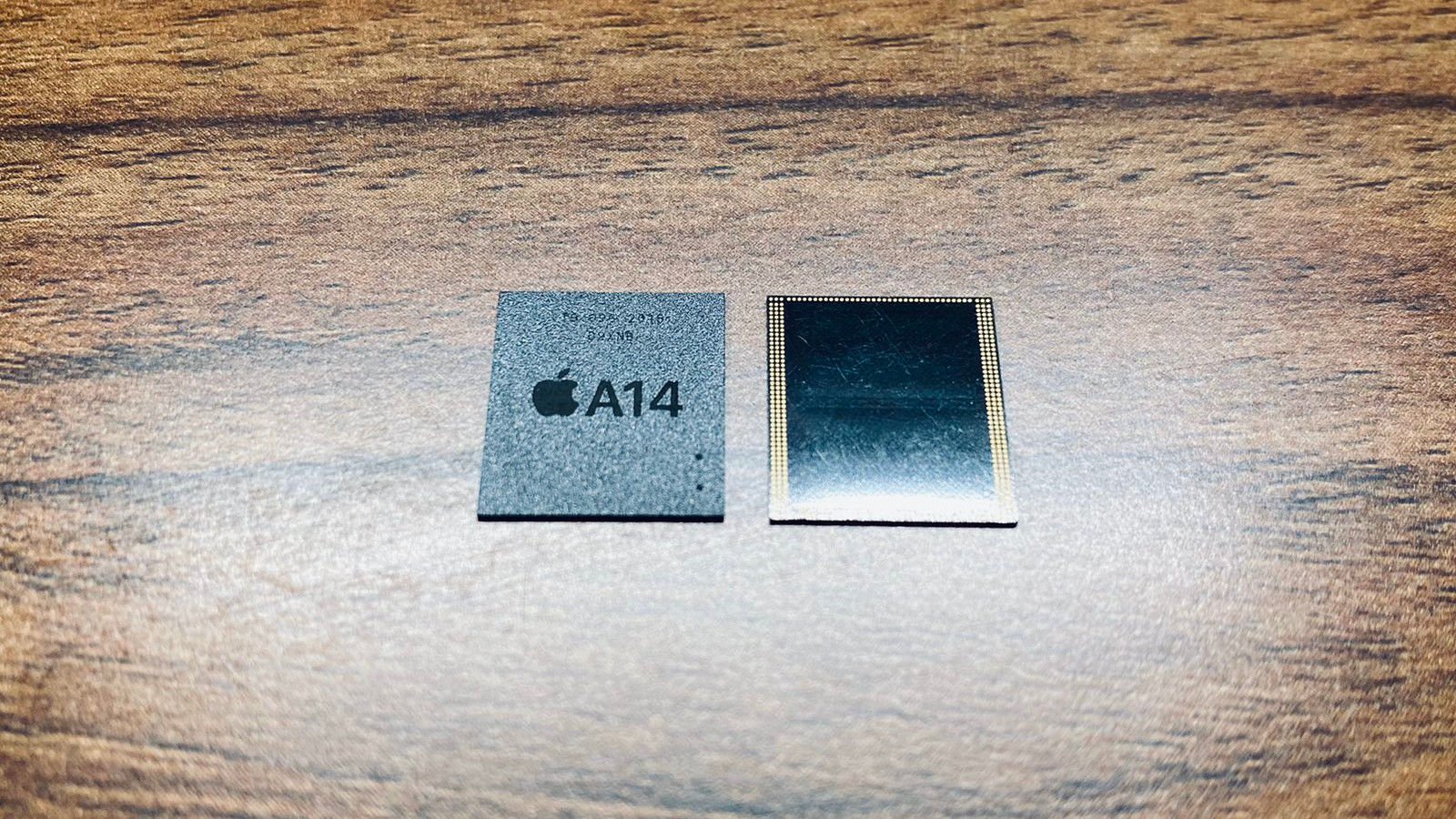
RAM
When it comes to performance, RAM is almost as important as the choice of processor; the fact that the iPhone SE (2020) has only 3GB, compared to the 4GB in all the other A13 phones, caused such a significant reduction in benchmark speed that people thought – almost certainly mistakenly – that it had been underclocked.
For this reason it’s pleasing to see the inclusion of a really solid 6GB of RAM in this year’s Pro models. The non-Pro models, however, have to settle for 4GB.
The 4GB/6GB prediction came from Jon Prosser in May 2020, but was backed up by the usually reliable leaker @L0vetodream in July.
Storage
As we’ve suspected for a while, it looks like Apple will whip away that slightly under-par 64GB base storage option later this year (the 2020 iPhone SE still offers a baseline 64GB allocation, but that’s firmly aimed at the budget-conscious buyer). The minimum will be 128GB.
Screens
We may now know the full display specs for the late-2020 iPhones. In a tweet that’s since been deleted, DisplaySearch founder Ross Young dropped the full list, and it suggests that the iPhone 11’s successor will have a much sharper screen.
Here’s how they’re going to shape up, if Young is right.
- iPhone 12: 5.4in (2340×1080, 477ppi)
- iPhone 12 Max: 6.1in (2532×1170, 457ppi)
- iPhone 12 Pro: 6.1in (2532×1170, 457ppi)
- iPhone 12 Pro Max: 6.7in (2778×1284, 457ppi)
(Note that we calculated the pixel density figures ourselves using CalculatorSoup, so any errors are ours alone. The original leak quoted slightly different figures of 475, 460, 460 and 458ppi respectively – we’re not sure how they arrived at those numbers.)
Here’s how that compares with the current line-up:
- iPhone SE: 4.7in, 1334×750, 326ppi
- iPhone 11 (and XR): 6.1in, 1792×828, 326ppi
- iPhone 11 Pro: 5.8in, 2436×1125, 458ppi
- iPhone 11 Pro Max: 6.5in, 2688×1242, 458ppi
It seems logical that Apple would try to offer something a little more impressive than 326ppi on its mid-range phones – that always seemed a little stingy for £729/$699 – and give Android handsets more of a challenge. What does seem odd is the the idea that the iPhone 12, the cheapest of the new devices, would have a markedly higher pixel density than any other model.
For that reason, and because the tweet was deleted, we’re not betting our houses on these specs being accurate. Hopefully some corroborating evidence will arrive soon.
As for the refresh rate, rumours point to the Pro models getting 120Hz. That’s old news in Android land, of course, and is already available (complete with ProMotion dynamic switching) on the iPad Pros, but would be new for Apple’s phone line. Don’t count your chickens just yet, though: other pundits believe 120Hz is off.
EverythingApplePro thinks the ProMotion feature (which is a separate but related matter: it enables a device to switch from 60 to 120Hz as and when it’s necessary, to preserve battery life) is nailed on for the iPhone 12 Pro models; Jon Prosser thinks it could yet be “nerfed in software”.
Finally, what about the glass itself? In late July, the US firm that makes Gorilla Glass announced its latest development: Gorilla Glass Victus. This material is, Corning claims, twice as drop-resistant as the previous version and four times as scratch-resistant as rival glasses – and since Gorilla Glass is used in existing iPhone models, the gossipmongers immediately started to wonder if Victus would make an appearance in the iPhone 12.
Apple is such an important customer for Corning that we’d be surprised if Victus isn’t already being used in iPhone 12 production; the announcement has been timed in such a way that it would embarrass Apple if it now has to launch the 12 without the latest screen materials. But Cupertino has always been cagey about Corning’s involvement in iPhone production, and it’s possible that it simply won’t say one way or the other.
Battery capacity
Apple sometimes comes in for mockery when it refers to its latest device as the “best iPhone yet” – what else would you expect, people point out. Technology gets better each year, and if you didn’t offer better specs than the previous model nobody would upgrade.
In one respect, however, it appears the iPhone 12 may be a little behind its predecessor. Screenshots from various databases suggest the new models will have smaller batteries.

If the figures are correct, the iPhone 12 Max has a battery capacity of 2775mAh, 335mAh lower than the iPhone 11. The 12 Pro is also 2775mAh, 271mAh less than the iPhone 11 Pro. And the 12 Pro Max looks to be 3687mAh, 282mAh less than the iPhone 11 Pro Max.
That sounds very odd indeed, not just because of the aforementioned expectation for tech to advance every year but also because 5G and OLED screens throughout the range (both expected this year) will mean greater power drain on the new handsets. More power drain, less battery capacity, bad news for battery life.
Well, not necessarily. As the Macalope points out, “we know nothing about what other changes Apple may have made in hardware or software the might affect power consumption”. For sure, if the iPhone 12 has half the battery life of the 11, we’ll discover that in testing and give it a brutal review. But Apple is aware that people take battery life seriously and we’d be very surprised if it hasn’t got a plan.
Video capture
Pundits and leakers remain comparatively reticent on the subject of the iPhone 12’s camera chops, but we do hear that it could be the first smartphone to offer 4K video capture at 240fps.
Price: How much will the iPhone 12 cost?
There’s heated disagreement in this area.
Jon Prosser – a high-profile and widely respected leaker, despite an error at WWDC – thinks the iPhone 12 will start at $649, a $50 drop in price from the entry-level iPhone 11 – which would make sense, given that it will have a smaller 5.4in screen and apparently won’t include any accessories. But more recently we’ve heard that we’ll see a price rise, with the cheapest model costing $749. That would be controversial, to say the least, but Apple does love to tell us about its courage.
The price-rise theory remains a bit of an outlier, so we’re going to remain optimistic about prices holding steady or even dropping slightly. Here’s what Prosser predicts, with our UK estimates added in brackets at the end:
- iPhone 12, 128GB: $649 (£679)
- iPhone 12, 256GB: $749 (£779)
- iPhone 12 Max, 128GB: $749 (£789)
- iPhone 12 Max, 256GB: $849 (£889)
- iPhone 12 Pro, 128GB: $999 (£1,049)
- iPhone 12 Pro, 256GB: $1,099 (£1,149)
- iPhone 12 Pro, 512GB: $1,299 (£1,349)
- iPhone 12 Pro Max, 128GB: $1,099 (£1,149)
- iPhone 12 Pro Max, 256GB: $1,199 (£1,249)
- iPhone 12 Pro Max, 512GB: $1,399 (£1,449)
And here’s how that compares to the prices of the iPhone 11, 11 Pro and 11 Pro Max, as of 12 May 2020:
- iPhone 11 Pro Max: from £1,149/$1,099
- iPhone 11 Pro: from £1,049/$999
- iPhone 11: from £729/$699
Apple has been ramping up its phone prices for a while now, particularly in the UK, and it would be pleasing if these reports are right and there is no price rise on the iPhone 12 Pro, despite its larger screen and 5G. Although perhaps we won’t be be feeling so positive if, as mentioned above, Apple keeps prices flat by ditching the headphones and wall charger from the box. Talking of which…
What’s in the box?
Apple has bundled pretty much the same collection of accessories and paperwork with every iPhone since 2007. But there’s evidence that this year will be different.
Firstly, about the EarPods we’ve been taking for granted. Back in May the respected pundit Ming-Chi Kuo predicted that Apple might ship the iPhone 12 with no headphones at all. A second analyst, Dan Ives, backed up the theory in June.
But things didn’t stop there. The theory now is that we won’t get headphones or a charger. The second part of that is supported by a somewhat loaded survey that Apple’s been running, asking people if they’ve still got their old chargers and whether they still work.
If Apple does strip out these two old faithful accessories from the iPhone 12 box (it’s unclear at this point if the Pro models will be included in the purge) there will be a lot of unhappy campers in Apple world. But there are good reasons why it makes sense: as the survey will presumably make clear, lots of us still have one, two or even more old sets of accessories from previous years’ iPhone purchases, and which we don’t use any more because of duplication or because we’ve bought better alternatives.
Both financially and environmentally it makes little sense to bundle electrical items which consume non-trivial resources to make and dispose of and which in many cases remain unused. Far better to leave them out, avoid having to bump up the price, and let those who need to buy the things from the Apple store.
Also, it means Apple will be able to design an ‘exquisite’ new box. We haven’t seen that yet, but we have glimpsed a 3D render of the box insert from a “really reliable source”. As you can see, it hasn’t got room for a charging plug and there doesn’t seem to be space for headphones either:
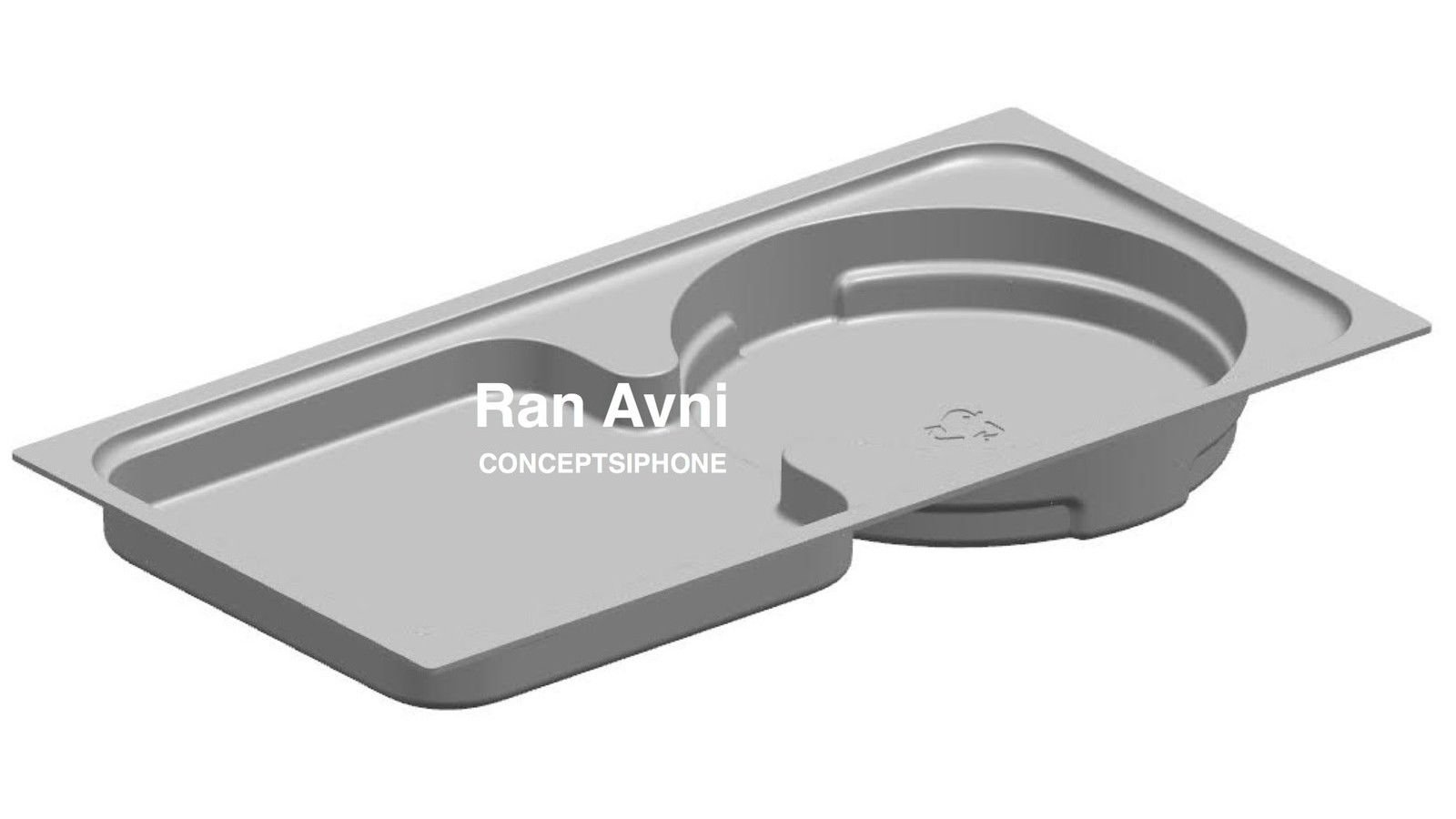
Apple may be able to sugar the pill slightly if reports of a braided Lightning cable are correct. Plausible reports from the supply chain suggest the new cable will look nicer, feel nicer and last much longer before fraying.
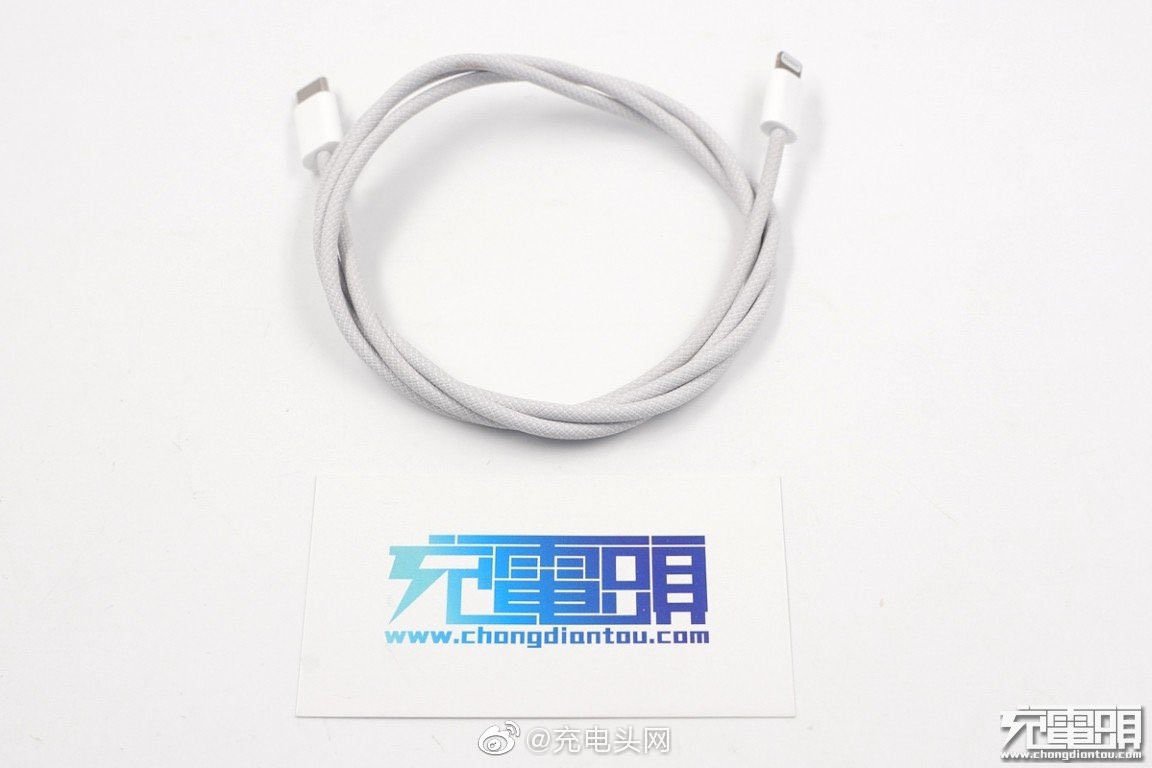
That appears to be the only accessory in the box, so it makes sense to give it a bit of a makeover, and may compensate for some of the bad news. It also fits with current trends, because Apple sells a braided Thunderbolt cable.
Note, however, that it’s expected to be a Lightning-to-USB-C cable, which means it won’t work with the charging plug from almost any previous iPhone. (The iPhone 11 Pro and Pro Max are the only Apple phones to come with USB-C chargers.) You may end up shelling out for a new charger anyway.
The same source has since dropped more photos of the braided cable, and it now seems there will be white and black versions. The photos were posted in a now-deleted tweet, but this composite image was snagged by 9to5Mac:
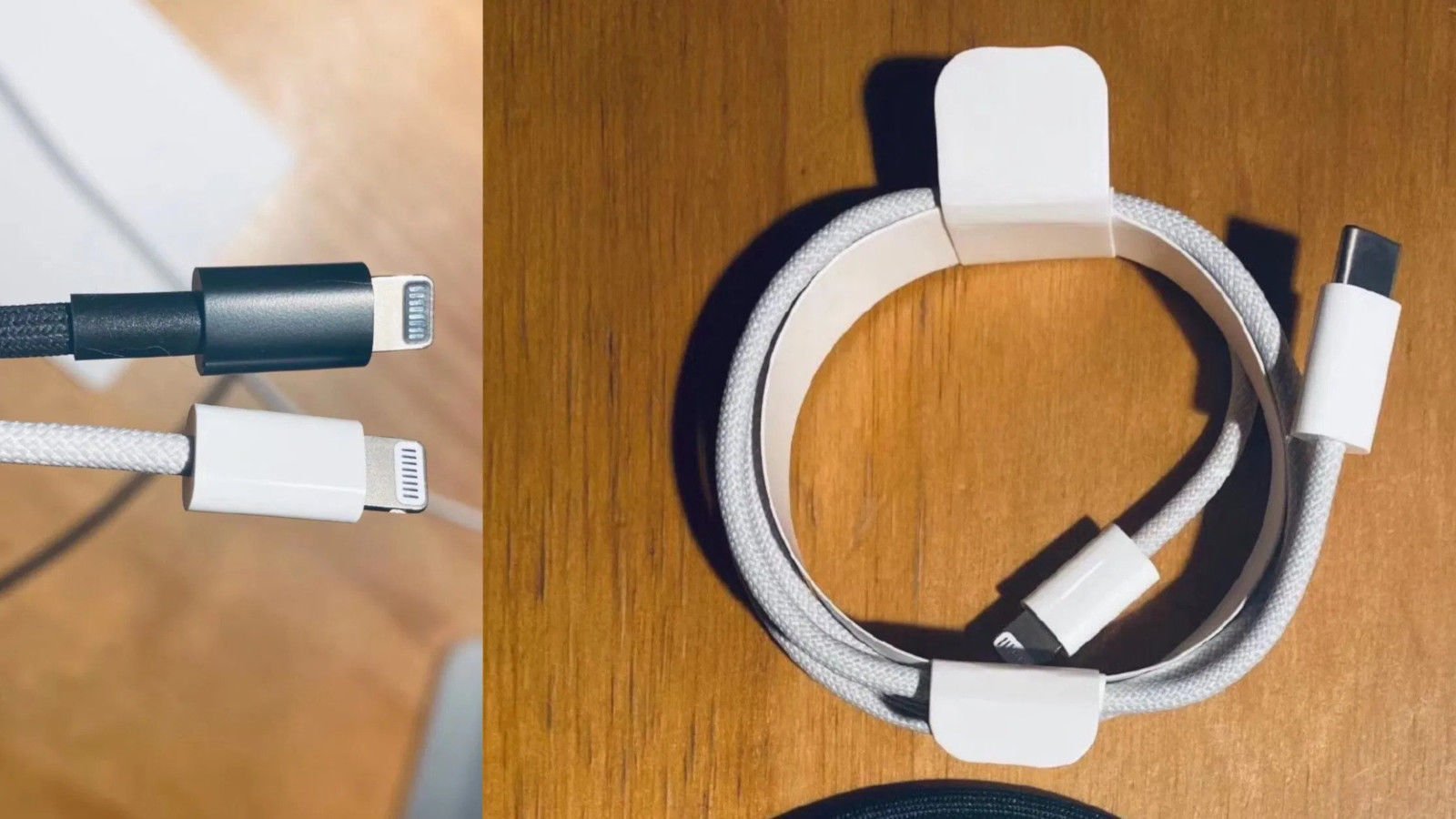
In conclusion, then, here’s what we think will be in the iPhone 12 box:
- iPhone 12
- Braided Lightning-to-USB-C cable (in white and black finishes)
- Some stickers
…and that’s it.
Further reading
That’s all the iPhone 12 rumours for now.
If you’d like to know more about Apple’s plans for the rest of the year, read our guide to the new Apple products expected in 2020. Those who are interested in the current smartphone lineup should instead focus on our iPhone buying guide, or our roundup of the best iPhone deals.

